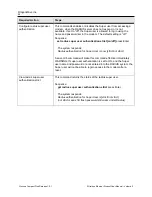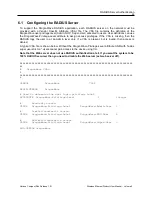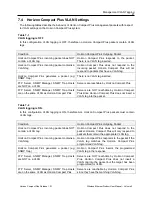
DragonWave Inc.
34
Horizon Compact Plus Release 1.0.1
Wireless Ethernet Product User Manual
– Volume 2
8.5.3
Weighted Fair Queuing (WFQ)
Priority Queuing scheduling has the drawback of wasting bandwidth when any of the bandwidth
requirements of the queues are below the set CIR for that queue. Any unused bandwidth allocated to a
queue cannot be redistributed to the other queues. Also, there is a possibility of starving the lower priority
queues when the higher priority queues are over subscribed. WFQ helps in solving these problems.
In WFQ, each of the queues are assigned a weight (0
– 64). Each queue is also assigned a CIR which
guarantees the minimum bandwidth for the traffic in that queue when congestion occurs. The bandwidth
is allocated to each queue in proportional to the assigned weight up to the allocated CIR if the queue has
packets to send. After the CIR is met, a queue is allocated unused bandwidth (which means all queues
have met their CIR,
or queues which have not met the CIR don’t have any packets queued) proportional
to assigned weights.
Note that the sum of all CIRs must not exceed 100%, but can be less if desired. When a queue meets its
CIR, it is serviced only when bandwidth is not consumed by the other queues which have not met their
CIR. See
Figure 8-2
for a graphical representation of the above statements.
Figure 8-2 Weighted Fair Queuing Concept
.
















































